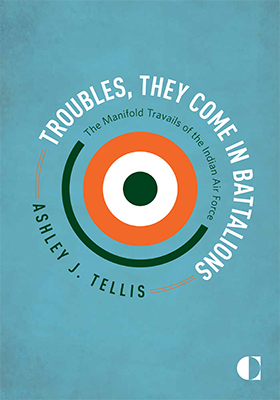The Indian Air Force (IAF) is in crisis. Despite being a world-class combat arm, the IAF’s falling end strength and problematic force structure, combined with its troubled acquisition and development programs, threaten India’s air superiority over its rapidly modernizing rivals, China and Pakistan. Indian air dominance is vital for deterrence stability in southern Asia and for preserving the strategic balance in the wider Indo-Pacific region. Resolving India’s airpower crisis, therefore, should be a priority for New Delhi.
Troubles Facing the Indian Air Force
- The IAF’s fighter force, as of early 2016, is weaker than the numbers suggest. At nominally 36.5 squadrons, it is well short of its sanctioned strength, and many of its frontline aircraft are obsolete.
- China and Pakistan field about 750 advanced air defense/multirole fighters against the IAF’s 450-odd equivalents. The airfield infrastructure limitations in Tibet, however, prevent China from bringing all of its air capabilities to bear against India. Yet after 2025, China could be able to deploy anywhere between 300 and 400 sophisticated aircraft against India, in addition to the 100 to 200 advanced fighters likely to exist in Pakistan by then.
- The IAF’s desire for 42–45 squadrons by 2027—some 750–800 aircraft—is compelling, if India is to preserve the airpower superiority it has enjoyed in southern Asia since 1971.
- The IAF’s likelihood of reaching its 2027 goal with a high proportion of advanced fighters is poor. It is stymied by serious constraints on India’s defense budget, the impediments imposed by the acquisition process, the meager achievements of the country’s domestic development organizations, the weaknesses of the higher defense management system, and India’s inability to reconcile the need for self-sufficiency in defense production with the necessity of maintaining technological superiority over rivals.
- The IAF is attempting to reach its desired end strength by acquiring the Tejas Mark 1 to beef up its lightweight segment, filling out the remainder of its Medium Multirole Combat Aircraft (MMRCA) purchase in its medium-weight segment, and continuing with the Su-30MKI acquisition and the PAK-FA co-development programs to sustain its heavyweight segment.
- All three tiers of the IAF are currently in trouble. The Tejas Mark 1 is handicapped by significant technological deficiencies; the prospects for expanding the MMRCA component to compensate for the Tejas’s shortcomings are unclear; and the IAF’s reluctance to proceed fully with the PAK-FA program could undermine its fifth-generation fighter ambitions.
Recommendations for India
- India needs to safeguard its regional air superiority over both Pakistan and China by mustering the requisite end strength and enhancing its extant operational advantages.
- The IAF should revisit some aspects of its current approach. It should be cautious about expanding the Tejas acquisition beyond six squadrons and consider enlarging the MMRCA component with the cheapest fourth-generation-plus Western fighter available. India should also reassess the decision to develop the Advanced Medium Combat Aircraft indigenously and avoid weakening the collaboration with Russia on the PAK-FA program.
- India should expand its investments in advanced munitions, combat support aircraft, electronic warfare, physical infrastructure, and pilot proficiency—all current strengths—while being realistic about its domestic capacity to produce sophisticated combat aircraft. Indian policymakers must especially guard against the temptation to prioritize indigenous design and manufacture over the imperative of providing the IAF’s able
pilots with the best fighters available.

.jpg)



